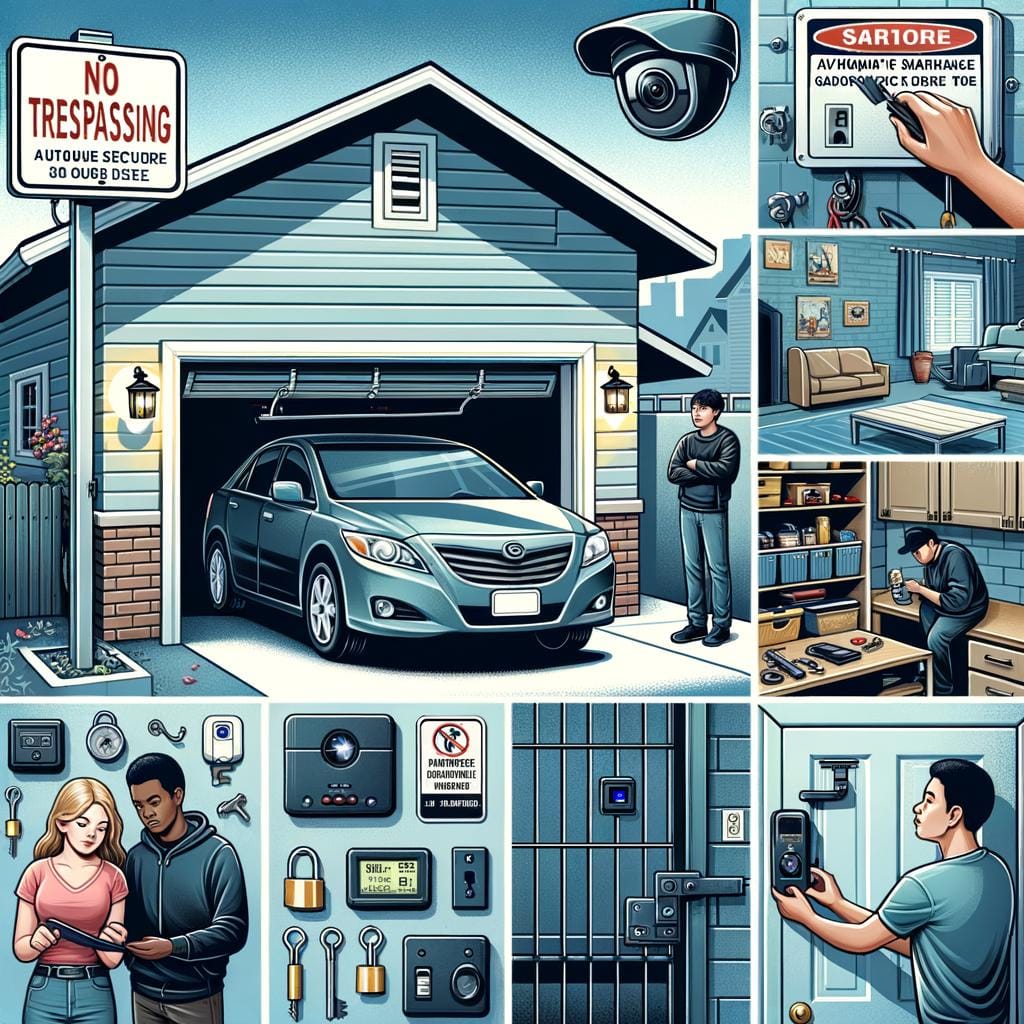In the digital age, we capture and store countless memories through our digital cameras and smartphones. However, without proper organization, these precious moments can quickly become overwhelming to manage. This is where digital photo sorting comes into play, allowing us to streamline and effectively categorize our extensive collection of images with ease.
Organizing your digital photos is essential for several reasons. Not only does it help you easily locate specific photos when needed, but it also enables you to create a well-structured archive of your memories. Whether it’s for personal or professional use, having a system in place for sorting your photos can save time and frustration in the long run.
To efficiently sort and categorize your digital photos, utilizing specialized software can greatly simplify the process. These tools offer a range of features such as automated tagging, facial recognition, and customizable filters that make organizing your photo library a breeze. By implementing digital photo sorting software into your workflow, you can ensure that every image is properly labeled and stored for easy access whenever necessary.
Benefits of Using Digital Photo Sorting Software
When it comes to managing a vast collection of digital photos, using photo sorting software can make a world of difference. This technology offers numerous benefits that can streamline the process of organizing and categorizing your images. Here are some key advantages of using digital photo sorting software:
- Efficiency: Digital photo sorting software is designed to quickly analyze and categorize large quantities of images, saving you valuable time and effort.
- Organization: These tools help you create structured albums or folders for your photos, making it easier to locate specific images when needed.
- Automation: Many digital photo sorting software applications come with features such as facial recognition and automatic tagging, which can further simplify the organization process.
Not only does digital photo sorting software offer efficiency and organization benefits, but it also provides a level of customization that allows you to manage your photo collection according to your preferences. With various tools available in the market, you can choose one that best suits your needs and enhances your overall experience with digital photography.
- Customization: You have the flexibility to create personalized tags, keywords, and categories for your photos, allowing for a tailored organization system.
- Enhanced editing capabilities: Some digital photo sorting software also comes equipped with basic editing features that enable you to enhance the quality of your images within the same application.
- Integration with other devices: Many modern photo sorting tools offer synchronization across multiple devices, ensuring that your organized photo collection is accessible wherever you go.
Tips for Efficiently Sorting and Categorizing Your Digital Photos
In the digital age, we are constantly bombarded with a multitude of photographs from various sources such as smartphones, cameras, and social media platforms. With such a large volume of photos piling up, it can quickly become overwhelming to manage and find specific images when needed. This is where efficient digital photo sorting comes into play. By organizing your digital photos effectively, you can easily locate and cherish your precious memories without sifting through an endless stream of clutter.
To help you streamline the process of sorting and categorizing your digital photos, here are some useful tips to consider:
- Create a Folder Structure: Start by creating a folder structure on your computer or cloud storage that makes sense to you. Consider organizing by event, date, location, or any other method that suits your needs.
- Utilize Keywords and Tags: Assign relevant keywords and tags to each photo to make searching easier. Use descriptive terms like names of people, locations, events, colors, or emotions associated with the image.
- Batch Processing: Take advantage of batch processing features in digital photo sorting software to quickly apply edits, tags, or metadata to multiple images simultaneously.
Efficiency is key when it comes to managing a large collection of digital photos. By implementing these tips into your photo sorting routine, you can save time and energy while maintaining a well-organized archive of memories at your fingertips.
Understanding Metadata and How It Helps With Digital Photo Sorting
Metadata plays a crucial role in the organization and management of digital photo collections. Essentially, metadata is information embedded within each digital image file that describes various aspects of the photo, such as the date taken, camera settings, location, and even keywords to describe the content of the image. Understanding how to utilize metadata effectively can greatly enhance your ability to sort and categorize your digital photos efficiently.
What Is Metadata?
Metadata is essentially data about data. In the context of digital photography, it refers to additional information that is embedded within each image file. This information can include details such as the date and time when the photo was taken, the camera settings used, GPS coordinates if available, and any keywords or tags assigned to the image. By having access to this metadata, users can easily search for specific images based on these parameters.
How Does Metadata Help With Digital Photo Sorting?
When you have a large collection of digital photos, sorting through them manually can be a time-consuming and overwhelming task. However, by utilizing metadata effectively, you can streamline this process significantly. For example, you can use metadata to filter images by date range, camera model used, or even location.
This makes it easier to group similar photos together and create meaningful categories for better organization. Additionally, metadata can help you quickly locate specific images based on certain criteria without having to browse through your entire photo library.
The Best Practices for Naming and Tagging Your Digital Photos
Digital photo organization is essential for anyone who wants to easily find, access, and enjoy their collection. One of the best practices for organizing your digital photos is through proper naming and tagging. By assigning descriptive names and relevant tags to your photos, you can make them more searchable and accessible when you need them.
When it comes to naming your digital photos, it’s important to be consistent and informative. Use clear file naming conventions that include a combination of dates, locations, events, or subjects. This will not only help you identify the content of the photos at a glance but also ensure that they are in chronological order for easy browsing.
In addition to naming your digital photos appropriately, tagging them with relevant keywords can further enhance their organization. Tags act as labels that provide additional context to your photos, making them even more searchable. Consider using keywords related to people, places, events, emotions, or any other significant aspects captured in the photos. This way, you can quickly filter through your collection based on specific criteria for a more efficient search process.
| Benefit | Description |
|---|---|
| Improved Searchability | Proper naming and tagging make it easier to find specific photos in a large collection. |
| Enhanced Organization | Creating a systematic approach to naming and tagging helps keep your digital photo library well-structured. |
| Facilitates Sharing | By adding tags related to people or events in the photo, sharing becomes simpler with others who have access. |
How to Create a Backup Plan for Your Organized Digital Photo Collection
In this digital age, our photo collections have largely transitioned from physical albums to digital libraries. With the convenience of smartphones and digital cameras, we now have thousands of photos stored on our devices, cloud services, and various online platforms.
However, with this abundance of digital photos comes the risk of losing them due to technical malfunctions, accidental deletions, or even cyber-attacks. That is why creating a backup plan for your organized digital photo collection is crucial to ensure that your precious memories are kept safe.
The Importance of Backup
Backing up your digital photo collection is like purchasing insurance for your memories. It provides you with a safety net in case something goes wrong with your primary storage method. Whether it’s a hard drive failure, a lost device, or a malicious software attack, having backups ensures that you won’t lose all those moments captured in pixels forever.
Choosing the Right Backup Methods
There are several ways to create backups for your digital photo collection. The most common methods include using external hard drives, cloud storage services, and dedicated backup software. It’s advisable to utilize multiple backup methods for added security.
For instance, you can regularly back up your photos to an external hard drive while also syncing them to a cloud service like Google Drive or Dropbox. Additionally, consider investing in reliable backup software that can automate the process and provide easy restoration options in case of emergencies. By diversifying your backup methods, you can safeguard your digital memories effectively against unexpected loss scenarios.
Comparison of Top Digital Photo Sorting Tools and Apps
With the exponential growth of digital photos being taken and stored, the need for efficient digital photo sorting tools and apps has become crucial. There are numerous options available in the market that can help individuals manage their ever-expanding collections of images. These tools offer a range of features designed to streamline the process of organizing, categorizing, and managing digital photos.
One popular choice for digital photo sorting is Adobe Lightroom, which provides powerful editing capabilities along with robust organizational tools. Lightroom allows users to easily create folders, add tags, ratings, and keywords to their photos, making it easier to search and locate specific images. Another well-known option is Google Photos, which offers unlimited storage for compressed images and videos. The platform uses artificial intelligence to automatically organize photos by people, places, and things.
For those looking for a more specialized tool, PhotoSweeper is an excellent choice for eliminating duplicate photos in your collection. This software compares images based on similarity criteria such as content and size to identify duplicates efficiently.
On the other hand, ACDSee Photo Studio Ultimate offers advanced features like facial recognition and geotagging to enhance the organization process further. By utilizing these top digital photo sorting tools and apps, individuals can not only declutter their image libraries but also improve their overall photography workflow.
| Tool/App Name | Key Features |
|---|---|
| Adobe Lightroom | Powerful editing capabilities; robust organizational tools |
| Google Photos | Unlimited storage; automatic organization using AI |
| PhotoSweeper | Duplicate photo detection based on content similarities |
| ACDSee Photo Studio Ultimate | Facial recognition; geotagging features for enhanced organization |
Real-Life Success Stories of People Who Transformed Their Digital Photo Chaos Into Order
In a world where digital photo sorting has become increasingly necessary, real-life success stories offer inspiration and guidance on how to transform chaos into order. These individuals have embraced the challenge of organizing their vast collections of digital photos and have reaped the benefits of a well-managed and easily accessible archive.
By implementing effective strategies, utilizing efficient tools, and committing to consistent maintenance, these success stories serve as motivation for anyone looking to take control of their digital photo collection.
One common theme among these success stories is the use of dedicated digital photo sorting software. By leveraging advanced features and automation capabilities, individuals have been able to streamline the organization process and save time in categorizing their photos.
This powerful technology not only simplifies the task at hand but also helps maintain a structured and uniform system for easy retrieval in the future. By incorporating such software into their workflow, these individuals have witnessed a significant improvement in their overall efficiency and effectiveness in managing their digital photo libraries.
Furthermore, these success stories highlight the importance of maintaining a backup plan for organized digital photo collections. By storing duplicates in secure locations such as external hard drives or cloud storage services, individuals can safeguard against data loss or corruption.
Implementing a reliable backup strategy ensures that all the hard work put into organizing and sorting digital photos is not lost in case of unforeseen circumstances. Ultimately, by following the example set by these real-life success stories, anyone can confidently tackle their own digital photo chaos with patience, dedication, and the right tools at hand.
Frequently Asked Questions
What Is the Best Way to Organize Digital Pictures?
The best way to organize digital pictures is to create a system that works for you. This can include organizing them by date, event, location, or any other method that makes it easy for you to find specific pictures when needed. Using folders and subfolders on your computer can be helpful in keeping everything organized.
How Do I Sort Thousands of Photos?
Sorting through thousands of photos can seem like a daunting task, but breaking it down into smaller, manageable chunks can make the process easier. Start by creating categories or folders based on themes, dates, or events. Utilizing photo management software with tagging and filtering features can also help streamline the sorting process.
How Do I Organize My Photos to Digitize?
When organizing photos to digitize them, start by gathering all physical copies and deciding on a method for digitization. You can organize them by year, person, event, or any other relevant category before scanning them into your computer or cloud storage. Make sure to label scanned files appropriately to easily locate them later.

Hello, I’m April Denton, your go-to expert for all things home decluttering and organization. With over a decade of experience helping individuals transform their living spaces into serene, clutter-free sanctuaries, I am passionate about the life-changing benefits of decluttering. My journey into the world of organization began out of necessity, juggling a busy career and a bustling household. I quickly realized that a well-organized home was the key to a more balanced, stress-free life.





